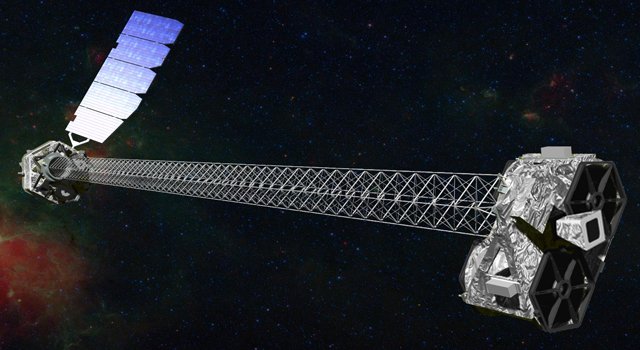

PASADENA, Calif. -- The planned launch of NASA's Nuclear Spectroscopic Telescope Array (NuSTAR) mission has been postponed after a March 15 launch status meeting. The launch will be rescheduled to allow additional time to confirm the flight software used by the launch vehicle's flight computer will issue commands to the rocket as intended.
The spacecraft will lift off on an Orbital Sciences Pegasus XL rocket, which will be released from an aircraft taking off from the Reagan Test Site on the Kwajalein Atoll in the Marshall Islands. The time required to complete the software review has moved NuSTAR beyond the March timeframe currently available on the range at Kwajalein. In the interim, NASA will coordinate with the launch site to determine the earliest possible launch opportunity. This is expected to be within the next two months.
NuSTAR will use advanced optics and detectors, allowing astronomers to observe the high-energy X-ray sky with much greater sensitivity and clarity than any mission flown before. The mission will advance our understanding of how structures in the universe form and evolve. It will observe some of the hottest, densest and most energetic objects in the universe, including black holes, their high-speed particle jets, ultra-dense neutron stars, supernova remnants and our sun.
NuSTAR is a Small Explorer mission led by the California Institute of Technology and managed by NASA's Jet Propulsion Laboratory, both in Pasadena, Calif., for NASA's Science Mission Directorate. The spacecraft was built by Orbital Sciences Corporation, Dulles, Va. Its instrument was built by a consortium including Caltech; JPL; the University of California, Berkeley; Columbia University, New York; NASA's Goddard Space Flight Center in Greenbelt, Md.; the Danish Technical University in Denmark; Lawrence Livermore National Laboratory, Calif.; and ATK Aerospace Systems, Goleta, Calif. NuSTAR will be operated by UC Berkeley, with the Italian Space Agency providing its equatorial ground station located at Malindi, Kenya. The mission's outreach program is based at Sonoma State University, Calif. NASA's Explorer Program is managed by Goddard. JPL is managed by Caltech for NASA.